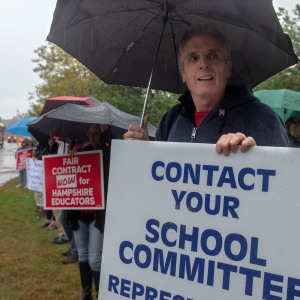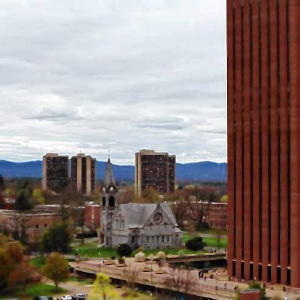School officials grapple with solutions for enrollment, funding declines
| Published: 07-21-2017 7:41 PM |
As enrollment or funding — or both — drop in their districts, leaders of rural schools are starting to organize and push back against the downward spiral.
Some hope that important fixes are on the way.
“I decided to stand and fight rather than bail on the situation,” said Mohawk Trail Regional School District Superintendent Michael Buoniconti, who in March of last year organized the first meeting of the Massachusetts Rural Schools Coalition and was surprised when 26 school superintendents showed up. “We weren’t organized, didn’t have a lobbying group, didn’t have a voice.”
With Buoniconti at the helm, the group has proposed several solutions to address the crisis in rural Massachusetts, including a funding formula that would provide additional aid to rural districts and a shared services center for rural schools to pool resources.
Buoniconti’s call for rural school aid is based on a “sparsity aid program” that Wisconsin established in 2007, which provides additional funding to school districts with no more than 745 students, or with fewer than 10 students per square mile.
State Sen. Adam Hinds, D-Pittsfield, introduced an amendment to this year’s budget — signed by Gov. Charlie Baker on Monday — that will have the Department of Elementary and Secondary Education conduct a feasibility study for creating rural sparsity aid. Among the metrics that will be considered are total student enrollment, student enrollment density per square mile and per capita income.
“It’s identifying a serious problem in the commonwealth in terms of regional disparities,” Hinds said of the feasibility study during an interview with the Gazette.
The feasibility study comes after state lawmakers voted to include the so-called “fair share” amendment — also dubbed the “millionaire’s tax” — as a ballot question in 2018. The constitutional amendment would place an additional 4 percent tax on annual incomes above $1 million, with that money earmarked for education and transportation alone.
Article continues after...
Yesterday's Most Read Articles
 Treehouse, Big Brothers Big Sisters turn race schedule snafu into positive
Treehouse, Big Brothers Big Sisters turn race schedule snafu into positive
 Northampton man will go to trial on first-degree murder charge after plea agreement talks break down
Northampton man will go to trial on first-degree murder charge after plea agreement talks break down
 Area property deed transfers, April 25
Area property deed transfers, April 25
 Contentious dispute ends as Hampshire Regional schools, union settle on contract
Contentious dispute ends as Hampshire Regional schools, union settle on contract
 South Hadley’s Lauren Marjanski signs National Letter of Intent to play soccer at Siena College
South Hadley’s Lauren Marjanski signs National Letter of Intent to play soccer at Siena College
 Primo Restaurant & Pizzeria in South Deerfield under new ownership
Primo Restaurant & Pizzeria in South Deerfield under new ownership
“We wanted to plant a flag that said, ‘Here is one area where we should focus that funding,’” Hinds said.
For Buoniconti, though, revenue is just one part of the solution. Rural schools, he said, must also find ways to save money.
“The bottom line is we have to operate more efficiently if we’re going to survive,” he said. “We really don’t have an option.”
One way to cut costs would be to pool resources with other rural districts. To that end, Buoniconti and the Massachusetts Rural Schools Coalition have proposed the creation of a nonprofit, state-run “rural public schools shared services center.”
The idea is to have a centralized platform where rural districts can list excess services they are able to provide, or request services they need. By joining together, rural districts would be able to create the economies of scale they currently lack.
Before lawmakers can move forward to create the center, however, Buoniconti said the coalition will have to prove that the concept works. The coalition hopes to offer districts a centralized systems administration service to make their case.
Mohawk Trail Regional School District itself has centralized technology services in order to cut staffing expenses. The district used to have three full-time technology specialists for the district’s five schools, but once the schools were connected to broadband the district was able to make that service more efficient. Now, one systems administrator serves the entire district — geographically one of the largest in the state — from a remote location.
The concept could be applied to other jobs, Buoniconti said, such as central office and business administration services. That means that some employees would lose their jobs, but Buoniconti said the alternative is the death of many rural schools in the state.
“Life’s not fair, we’re in a tough spot right now,” he said.
West of Mohawk Trail, Berkshire County is also experiencing enrollment challenges. An education task force there has proposed a radical reorganization of the county’s schools into a single county-wide school district.
Despite all of the solutions school officials have proposed, however, serious demographic challenges will continue to impact the state’s rural communities and their schools, enrollment projections suggest. Berkshire County schools, for example, have seen a 22 percent decline in students since 2000, and another 11 percent decline expected in the next 10 years, according to data from the Berkshire County Education Task Force.
For Hopson, the Gateway Regional superintendent, the question going forward is as much about economic opportunity in rural communities as it is about educational fixes.
“We’re only as good as the towns, and the towns are only as good as the schools,” he said.
Dusty Christensen can be reached at dchristensen@gazettenet.com.

 Federal probe targets UMass response to anti-Arab incidents
Federal probe targets UMass response to anti-Arab incidents Locking up carbon for good: Easthampton inventor’s CO2 removal system turns biomass into biochar
Locking up carbon for good: Easthampton inventor’s CO2 removal system turns biomass into biochar William Strickland, a longtime civil rights activist, scholar and friend of Malcolm X, has died
William Strickland, a longtime civil rights activist, scholar and friend of Malcolm X, has died Advancing water treatment: UMass startup Elateq Inc. wins state grant to deploy new technology
Advancing water treatment: UMass startup Elateq Inc. wins state grant to deploy new technology
